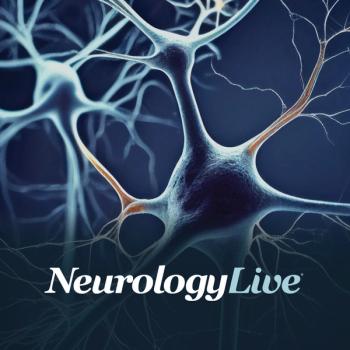
NeuroVoices: Stina Saunders, PhD, on the Utility of the Electronic Person-Specific Outcome Measure on Brain Health
The personalized medicine lead at Linus Health provided clarity on a new outcome measure that captures various perspectives about what matters to individuals and their brain health.
In recent years, it has become incredibly important to use outcome measures for novel interventions in Alzheimer disease (AD) that capture the research participants’ views of effectiveness. The electronic Person-Specific Outcome Measure (ePSOM) development program, developed several years ago, is underpinned by the need to identify and detect change in early disease manifestations and the possibilities of incorporating artificial intelligence in outcome measures. The ePSOM program consists of 4 sequential steps, ultimately aiming to employ new technology to create and outcome measure to be used in AD clinical research and practice.
At the
Led by Stina Saunders, PhD, those with a neurodegenerative disease diagnosis rated their confidence significantly lower (median score: 20/25; IQR, 17-23) than those without a diagnosis (median score: 24/25; IQR, 22-25; U = 8908; P <.05). Saunders, who serves as the personalized medicine lead at Linus Health, sat down with NeurologyLive® during the meeting to discuss the unique aspects of ePSOM and how it differs from other traditionally used measures to capture brain health. In a new iteration of
NeurologyLive: Discuss more about ePSOM and how it came about?
Stina Saunders, PhD: This work stems from several years ago. A couple of years ago at the University of Edinburgh, we collaborated with the European Medicines Agency and Alzheimer’s Research UK to examine how we measure treatment benefits in Alzheimer’s disease. There was recognition from different regulatory bodies, like the FDA and EMA, that we don't necessarily incorporate the patient's voice in evaluating whether treatments are having a meaningful effect. We tend to focus on biological changes and cognition, but it's crucial to bring in the patient voice as well.
That's where the electronic person-specific outcome measure (ePSOM) originated. A few years ago, we developed a stepwise program to capture the patient voice, initially as part of my PhD at Edinburgh. Linus then acquired this intellectual property and is now commercializing and developing it further. We drew from previous work in the UK to collect free-text responses from people, relying on self-reports without directing what mattered to them. We conducted a similar study in the US and found interesting differences between the two populations.
Analyzing responses from about 5000 people using natural language processing, we clustered responses into around 100 themes of brain health priorities. There were significant differences between UK and US priorities, highlighting the need to capture individual-level treatment priorities. Current tools, like quality of life and activities of daily living (ADL) measures, have predefined items that may not be applicable to all patients. For example, asking about doing laundry might not be relevant to everyone.
Our work focuses on incorporating the patient's voice. Some common themes included driving and reading, but also specific activities like following a recipe or a storyline in a film, going to a book club, and contributing to conversations. Many themes were language-based, emphasizing effective and meaningful communication. Social cognition, which is not typically captured by ADL measures, was also significant. We collected data in free-text form to avoid bias, prompting people to discuss what matters in their daily life, enjoyment, thinking abilities, relationships, and sense of purpose.
The sense of purpose category yielded very interesting answers. Evidence shows that a strong sense of purpose is associated with positive outcomes in later life, including resilience to cognitive decline and better brain health. Capturing what gives someone a sense of purpose can guide interventions to enhance their well-being.
Among your data you presented, what are the greatest takeaways? What stands out from a clinical perspective?
It's been really interesting, even when we've published some of this work before, the peer review process has asked us, "Oh, you know, you come up with, say, 100 priorities across your whole data set. So are you saying that we should check patients' progress against all of these?" But we're saying, no, we’re just showing that there’s a lot of heterogeneity in what matters to people. In some ways, you could say that the specific items themselves are less important; what matters is being able to capture what’s important to the individual.
Some common themes we found were things like driving and reading, but also some very specific items that you wouldn’t normally see in other outcome measures, like following a recipe book, following a storyline in a film, going to a book club, and contributing to a conversation. A lot of it was about communication—effective, meaningful communication—and language-based themes. Another interesting theme was social cognition, which we don’t really capture at all in the usual ADL measures (activities of daily living).
In our approach, we collect data in free-text form, so it’s very unbiased—people just report what they report. But we do prompt them with five categories: what matters to you in your everyday life, what matters in terms of enjoying your life, your thinking abilities, your relationships, and specifically, your sense of self and sense of purpose. I’d say a lot of very interesting answers come from that last category. There’s so much evidence, especially around the sense of purpose, and how it’s associated with positive outcomes in later life. People with a stronger sense of purpose are more resilient to cognitive decline and enjoy better brain health for longer. So, a sense of purpose isn’t just a “nice to have” construct; there’s hard evidence that it’s associated with better well-being.
Being able to capture what offers someone a sense of purpose and then promote it can really lift someone up. A lot of the sense of purpose answers we found were related to social cognition—things like volunteering, relating to other people, feeling valued, contributing, expressing opinions, and giving advice. If we can support people in these areas, once we’re aware of these priorities, it can have a very meaningful effect on their well-being.
Our work also raises considerations around some of the most commonly used outcome measures in neurodegenerative disease such as Clinical Dementia Rating scale (CDR) and how well these types of measures capture individual-level change. For instance, on the CDR, a score going from 0 which signifies no impairment, moving to 0.5 and 1 cover a long period of time where a person might go from independence to loss of independence. An intervention may well have an effect along that period of time in the very earliest stages of neurodegenerative disease but it’s difficult to tease out an effect between a treatment and placebo group using such a high level rating scale which isn’t personalised to the individual.
Did the research capture data on patients’ thoughts towards the newer antiamyloid treatments?
Our research didn't specifically capture thoughts on antiamyloid treatments. However, the priorities elicited from our outcome measure could anchor and direct treatment conversations between doctors and patients. Knowing a patient’s priorities helps in choosing treatment options, considering side effects, and adapting treatments to support what matters most to the patient.
What are some of the next steps in validating this tool?
I'm incredibly excited about the next phase. The evidence we've collected is promising. The tool is already being used in one study, and we’re looking forward to the results. Our approach involves capturing individual-level treatment priorities through free-text responses. We plan to develop a spoken tool for better accessibility. The scale measures self-reported confidence in performing activities that matter to the patient.
In future studies, we want to see how self-reported confidence scores relate to objective measures like cognitive and biological assessments. For example, with antiamyloid treatments, we’d like to see if clearing amyloid relates to maintaining confidence in doing meaningful activities. This would indicate treatment effectiveness.
The tool is being used in one study and we’re in talks with several pharma partners. Seeing drug response data in relation to this tool will be very exciting. In healthcare delivery, the focus is less on score changes and more on supporting meaningful benefits and interventions.
Transcript was edited for clarity.
REFERENCE
1. Saunders S, Jannati A, Gomes-Osman J, et al. The electronic Person-Specific Outcome Measure (ePSOM) in the US population: What matters to individuals the most about their brain health. Presented at: AAIC; July 28-August 1, 2024; ABSTRACT 92530
Newsletter
Keep your finger on the pulse of neurology—subscribe to NeurologyLive for expert interviews, new data, and breakthrough treatment updates.


































